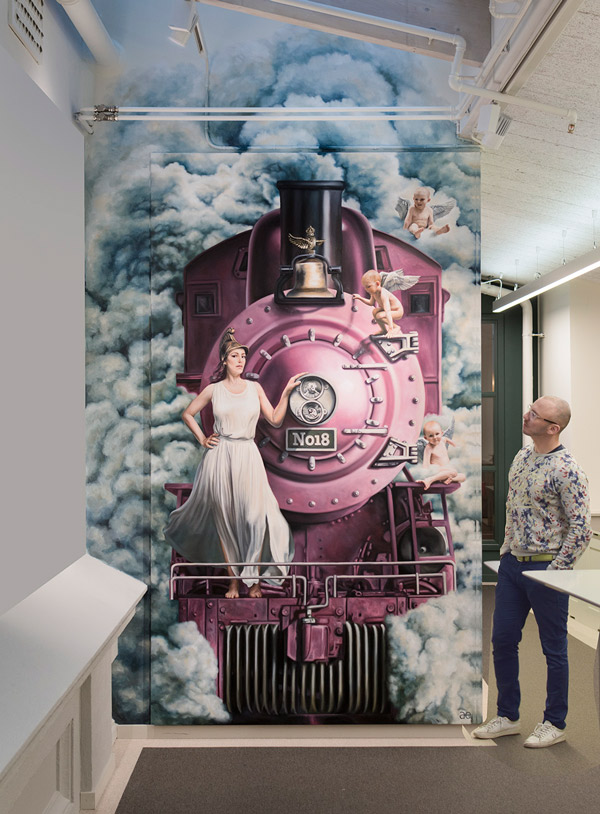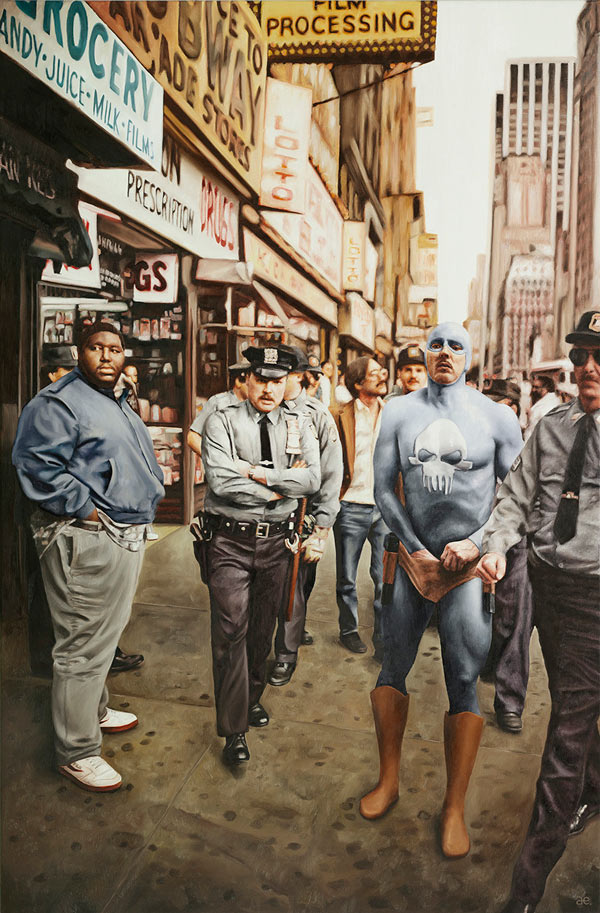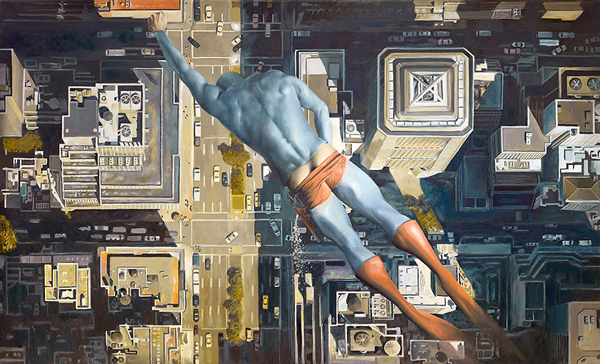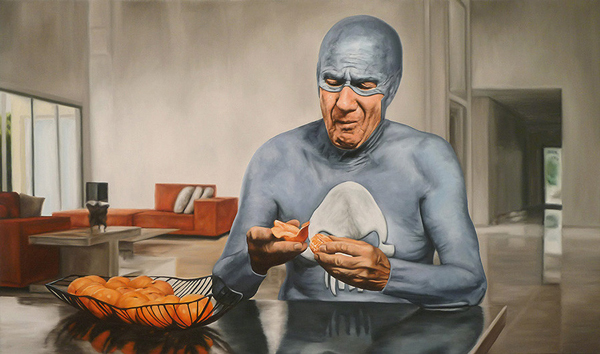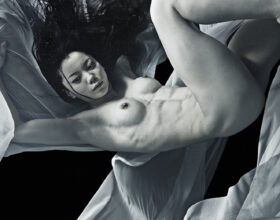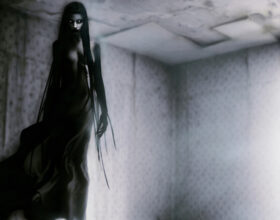Distinction Gallery (Escondido, CA) presents Andreas Englund‘s solo exhibition: Superlife Uncut. The exhibition features a number of the artist’s original oil paintings, aquarelles, lithographs, as well as collectors-quality, premium-quality, and very affordable classic prints. Through this series of work, you are invited to have a peek at the aging superhero’s private moments.
I came across Andreas’ works a couple of years ago. What I find most interesting is the fact that – unlike other superheroes – he seems to wear his costume 24 hours a day, 7 times a week; and that rather than hiding his identity, him costume reveals more facts about him. The way his mask and costume clings onto his face and body like a second skin make you able to see every wrinkle on his face and the exact contour of his physique. You can also see his every emotion vividly. It’s too easy to overt think the concept and conjure numerous speculative interpretations; but, isn’t that what great art are capable of: provoking thoughts: triggering discussions, and opening up new ideas, interpretations, and perspectives.
Andreas Englund: Superlife Uncut
Exhibition Dates:
July 8 – August 5, 2017
Distinction Gallery
317 E Grand Ave | Escondido CA 92025
(760) 707-2770

Unlike regular superheroes, the superhero you paint wears his costume even when he’s not fighting ‘the bad guys” . . . with that in mind, what do you think it says about him?
To me it has more of a symbolic meaning that he is stuck in his costume and thereby stuck in his superhero character, which he cannot escape. Kind of tragic when the roll you play engulfs you. I guess there are some examples where famous people have experienced the same kind of phenomenon where they cannot or dare not to escape their alternate ego/character.
Is the older superhero, younger superhero, and the toddler superhero the same person but at different stages of his life? Or are they 3 generations of superheroes?
This is the same person. This concept started to grow when I did the first painting of the older superhero. To me it opened up this “behind the scenes portrait” of a superhero’s life. How life and its challenges change over time. There was the question that I wanted to answer – if I was a superhero from birth, when would the society force me to start saving the world, and when would I be allowed to quit? Looking at other people with exceptional characteristics throughout history, my guess is I would be “stuck for life” saving the world.
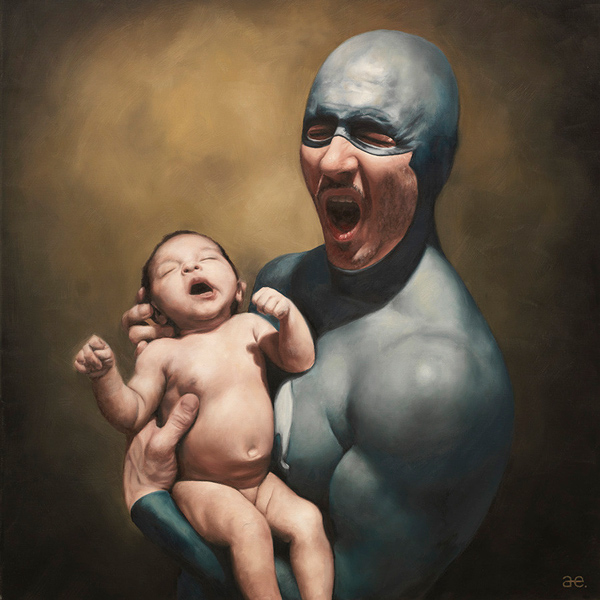
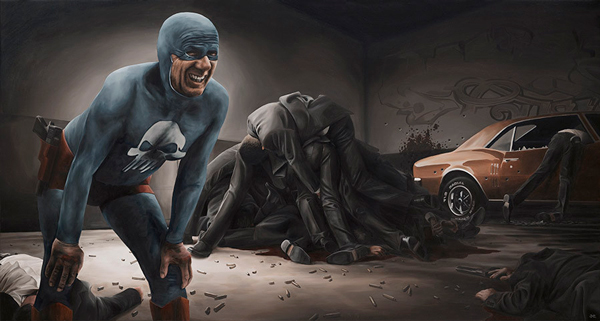
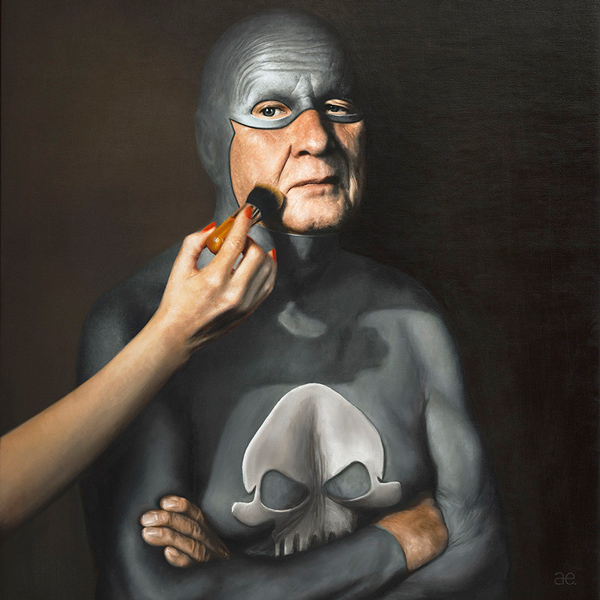
You once mentioned that the paintings are modeled after your father and your own self. Do you do it to give the paintings additional layers of meanings, or is it for a completely different reason?
My own personality shines through in many ways when I portray this character, like how he reacts to certain situations. When I work with myself as a model I feel the freedom to do whatever I like with this character, but at the same time, I stay true to his character. When it comes to portraying my dad, it feels a bit different. There’s still humor but also a lot of love and respect. Humor becomes the carrier of messages that are otherwise hard to convey. For me, it liberates my thoughts and ideas from pretentiousness while at the same time it opens doors to new routes and angles.
Does the skull on the superhero’s costume symbolize any specific thing?
Since the skull in most cases symbolizes something deadly dangerous – like the pirate flag or a symbol for poison etc. it brings extra drama to the contradiction – how the character wants to be perceived and what we/the viewer actually sees. It’s meant to be a familiar symbol in the world of superheroes since it’s not my intention to raise any questions about what the symbol might stand for or symbolize.
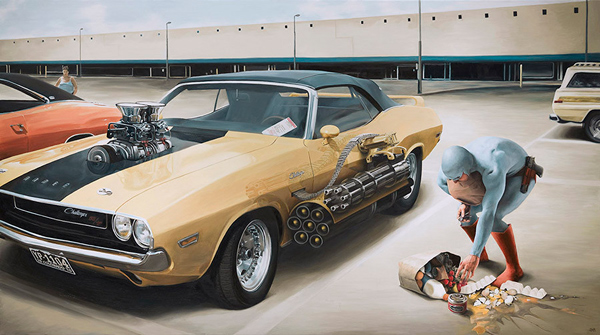
Do you remember the time when you started your first painting in this series? What idea or turn of events that led you to create it?
It all started when I wanted to portray a classic Greek sculpture (“the disc thrower”) but – in this case – being fat. I often want to challenge stereotypes, and in this case, the body of perfection – the classic Greek athlete – being in bad shape. During the process, the old Greek sculpture changed into a modern version of the Greek god – the superhero.
Instead of throwing a disc the superhero gets stuck in a more “locked up” pose where he tries to open a can of strawberry jam, which is the name of the painting. I liked the character but it was not a concept until I painted ”fight” where the old superhero shows up. At first, the senior character was just a villain who was supposed to beat my character. But in the process I realized that this older character was much more interesting. At the same time I didn’t have a costume/symbol for him either – who was he? Since my dad was the model for this older villain, it all fell into place. He was not the villain. But – instead – getting old (but still kicking ass). And, the concept was born.

Is there any detail or aspect of your work some people might fail to notice?
Depending on what kind of posts people have seen on the web some have thought that all my motifs is about the character being old when it is about his whole career – young and old. This has led to some misinterpretations. Otherwise, I’m rather surprised by all the details people do notice and in some cases interesting aspects I never thought of myself.
What’s the weirdest comment you’ve ever received about your work?
Well, maybe not weird, but surely surprising: There was a German psychiatrist who asked if she could use my series to treat her patients. She worked at a center where they treated violent men. My images would show that there is an alternative to the stereotype.
In another case, there was an organization for senior citizen’s rights in the job market that wanted to use my images to show that even if you are aging, you are still competent and deserve respect.
I believe that all artworks are, in some ways, self-portraits of the artists who created them. So, in a way, all artworks are mirrors that show their creators some things about themselves, including a few things they never realized before, and a few things that had changed through the passage of time. Do you mind sharing a few things you’ve noticed about yourself when you are looking at your most recent works?
I remember a friend of mine said that when he felt nervous about a project he knew they were on the right track. That is something I also try to strive for – to go beyond my comfort zone and challenge myself that’s how I develop. There is my technique and my ideas and when it comes to my technique I paint with softer contrasts now than before I was inspired by paintings from the late 19th century. When it comes to my ideas, I’m more interested in putting others in my paintings than myself since I’m now a father with a family and they have become a new part of me that I want to express in my paintings.
In your opinion, what is art and what does it mean to you?
To me it shows that the human spirit needs to be free of creation and imagination… executed from within without anyone asking for it. When I can see how the artists’ idea is being brought to life, there is a connection with that piece. With my art, I can share with others life and its stories. How the essentials of both life and the esthetics of art is the same regardless of who you are or where you come from.
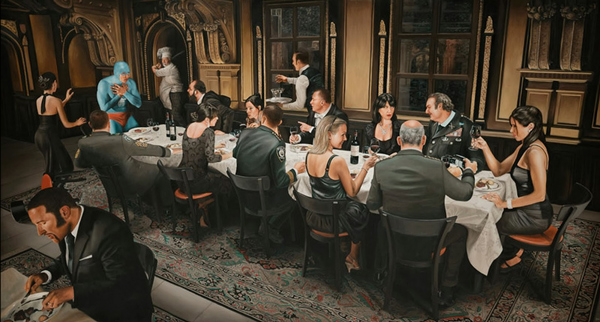
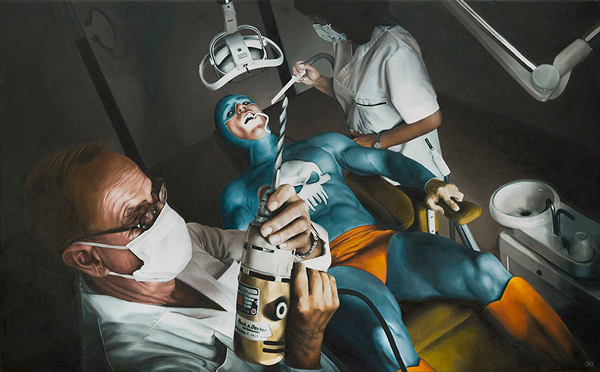
Let’s talk about influences. Which artists do you look up to? And how do you gather new inspirations for your next paintings?
I have had a career as an Art Director working with all kinds of media and expressions. There is the idea and its execution just like my art. Therefore, I feel a strong connection to Banksy work where often black humor, creativity and cleverness come together. “Dismaland” was simply genius. There is a Swedish artist Jesper Waldersten who also uses black humor/tragi-comedy in his work that always has inspired me. Lately Swedish artist Simon Stålenhag has fascinated me with his storytelling images. Photographers like Helmut Newton and David Lachapelle who both uses a lot of drama and humor in their photos – building and directing stories. The beauty of the body captured by photographer Howard Schatz has also inspired especially in my earlier works. Regarding technique, I have always been impressed by artists who can describe form and structure with just enough strokes like old Swedish painter Anders Zorn who mastered this technique in both oils and aquarelles.
When I gather inspiration, there is a combination of finding an interesting idea and different executions. Sometimes the idea leads to the execution and sometimes vice versa. I look at what captures my interest and see if I can find use of it. If I can find connections where opposites attract.
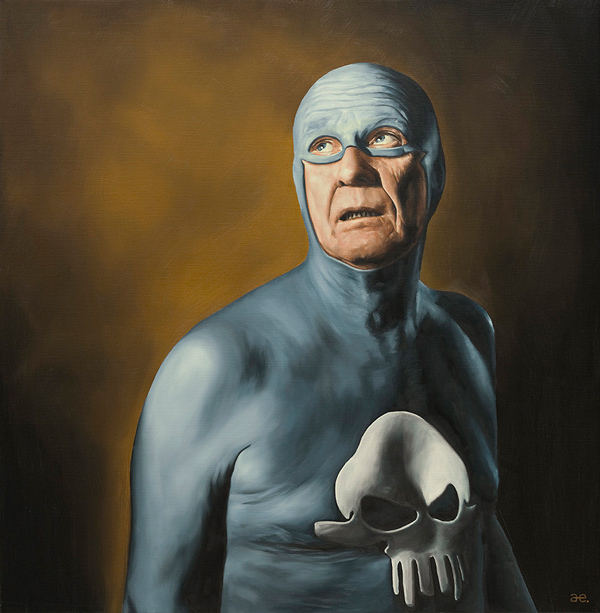
What are you working on at the moment?
One of my latest oils pictured a Greek goddess and one of my next projects will be a follow up on that theme – a classic motif put in a modern context. I’m also in the early stages of a sculpture project in a residential area that is to be built. I’m very excited to see what comes out of it since it’s a new challenge for me sculpturing in a big format.
